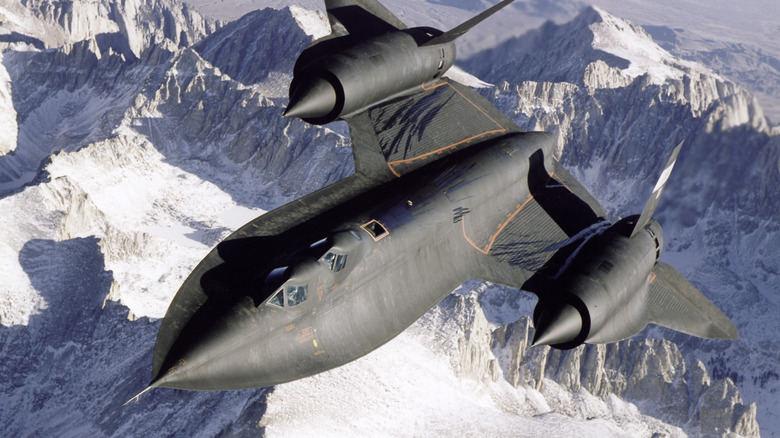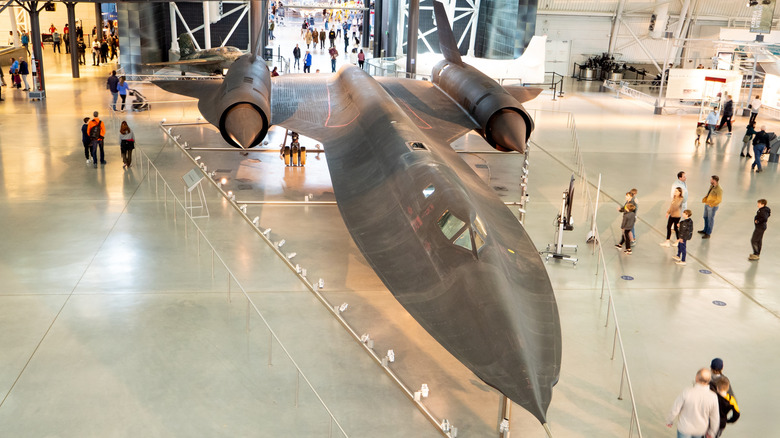How Slow Can The Ultra-Fast SR-71 Blackbird Jet Fly?
To say that the feature-packed SR-71 Blackbird is a work of art would be a disservice to the gifted hands and minds that willed it into existence. The aircraft has six world records under its belt, with the most notable being a speed record of 2,124 miles per hour when it flew from Los Angeles to Washington, D.C. in 1 hour, 4 minutes, and 20 seconds.
The jet has a cruising speed of Mach 3 (equivalent to 2,301.81 miles per hour) and can safely reach and even operate optimally at Mach 3.3. As such, we can all agree that the aircraft is one of the fastest, if not the fastest, reconnaissance jets ever made. But how slow can it fly? Well, the answer to that question isn't as straightforward as you would expect, as the craft doesn't have a definitively stated minimum speed.
However, during a fly-over request in England, U.S. Air Force Maj. Brian Shul and his co-pilot, Walt Watson, were able to hit speeds as low as 160 knots (equivalent to 184 mph). That in itself is just as important as the high speeds the aircraft is known to reach so effortlessly.
A product of Lockheed Martin
Like several of the great aircraft that have graced the U.S. Military throughout the 20th and 21st centuries, the SR-71 was crafted by an American aviation company, Lockheed Martin, which is responsible for gems like the F-22 Raptor and the F-35 Lightning II. Lockheed Martin built the SR-71 in the 1960s, with the craft's first flight taking place on December 22, 1964. During its development, the primary objective of the engineering team responsible for the project was to design a reconnaissance aircraft capable of operating not only at high speeds and altitudes but also of evading interceptors and missiles.
The program itself was top secret, given that the Cold War was in effect. Lockheed Martin's Skunk Works division, renowned for the company's advanced development programs, played a significant role in the creation of the aircraft, leveraging its expertise to craft a one-of-a-kind jet-propelled plane. Saying the expectations for the SR-71 team were high would be an understatement. Still, considering the plane's performance and feats over 2,800 flight hours during its 24-year service, it achieved just about everything it was intended to accomplish.
The SR-71 comes with two Pratt & Whitney's engines
Behind the SR-71's iconic speed is Pratt & Whitney's J-58 engine. If you aren't familiar with the engine maker, look no further than the F-16, F-22, and F-35, which are just a handful of fighter jets powered by Pratt & Whitney's engines. The SR-71 featured two J-58s, each meticulously designed to not only propel the reconnaissance jet into supersonic speeds but also maintain those speeds comfortably while the craft carried out its tasks.
As such, the J-58 comes with several interesting features, such as the ability to operate in either high-speed or turbojet mode. While the SR-71's supersonic speed is one of its most outstanding achievements, its ability to fly as slowly as Shul and Watson managed is just as important, as it allows the craft to land or take off. Slower speeds might also be more useful when the SR-71 is flying at lower altitudes while gathering intelligence during specialized missions.


